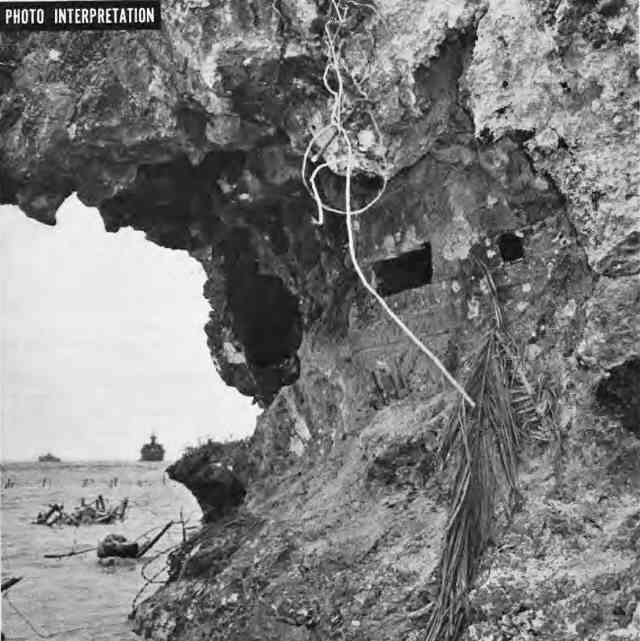
AS our forces in the Pacific move closer to the heart of the Jap Empire we learn more and more about the nature of the enemy, the way he fights and the equipment he uses. As we capture new Jap-held bases we are able to study and photograph his installations and arrive at important conclusions as to his methods of military defense. Photo interpreters whose job it is to get as much miltiary information as possible from photographs of enemy territory and activity have found that defense installations follow certain definite patterns, and that these patterns recur in Jap bases in various parts of the Pacific theater. It is highly important that pilots and their crews who fly the bombing attacks against these enemy bases become familiar with these patterns and able to recognize typical installations from the air. Guam offered the Japs every opportunity for favorable fortification against attack. In the north half of the island every seaward approach is obstructed by cliffs 300 to 600 feet high. There are no harbors and shallow bays are filled with reefs.
The south half of the island has the large harbor of Apra and several minor harbors, but there are the same hazards involved in passage over the reefs. The beaches are obstructed by reef-shelf varying in width from 20 to 1,000 yards. Besides the cliffs surrounding possible landing beaches, a ridge running across the waist of the island offered primary defense positions. But the Japs were unable to hold this base, equidistant from Yokohama, Formosa, Manila and Port Moresby.
